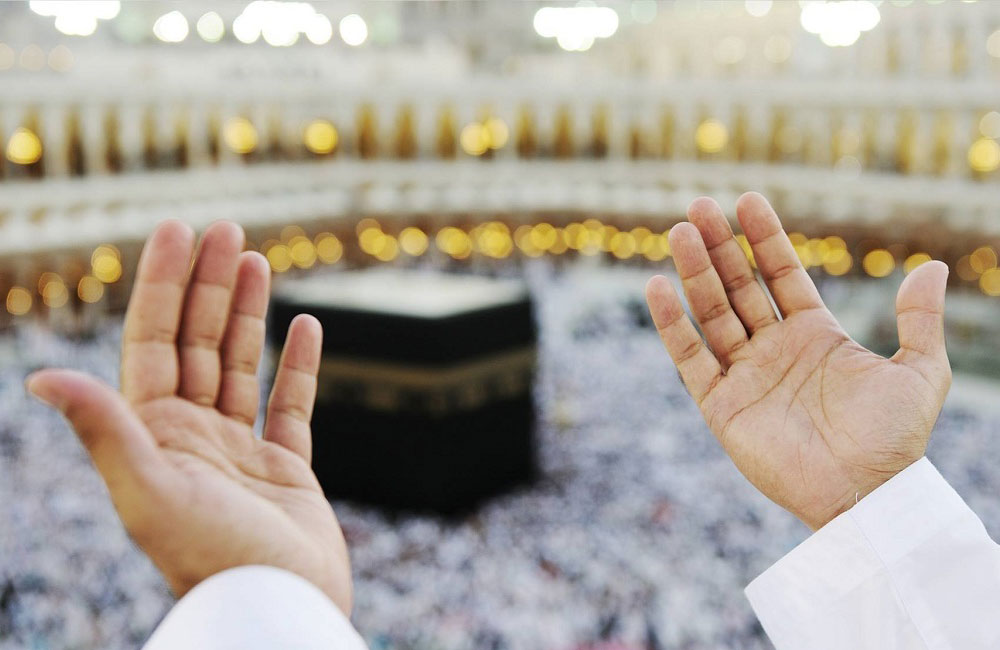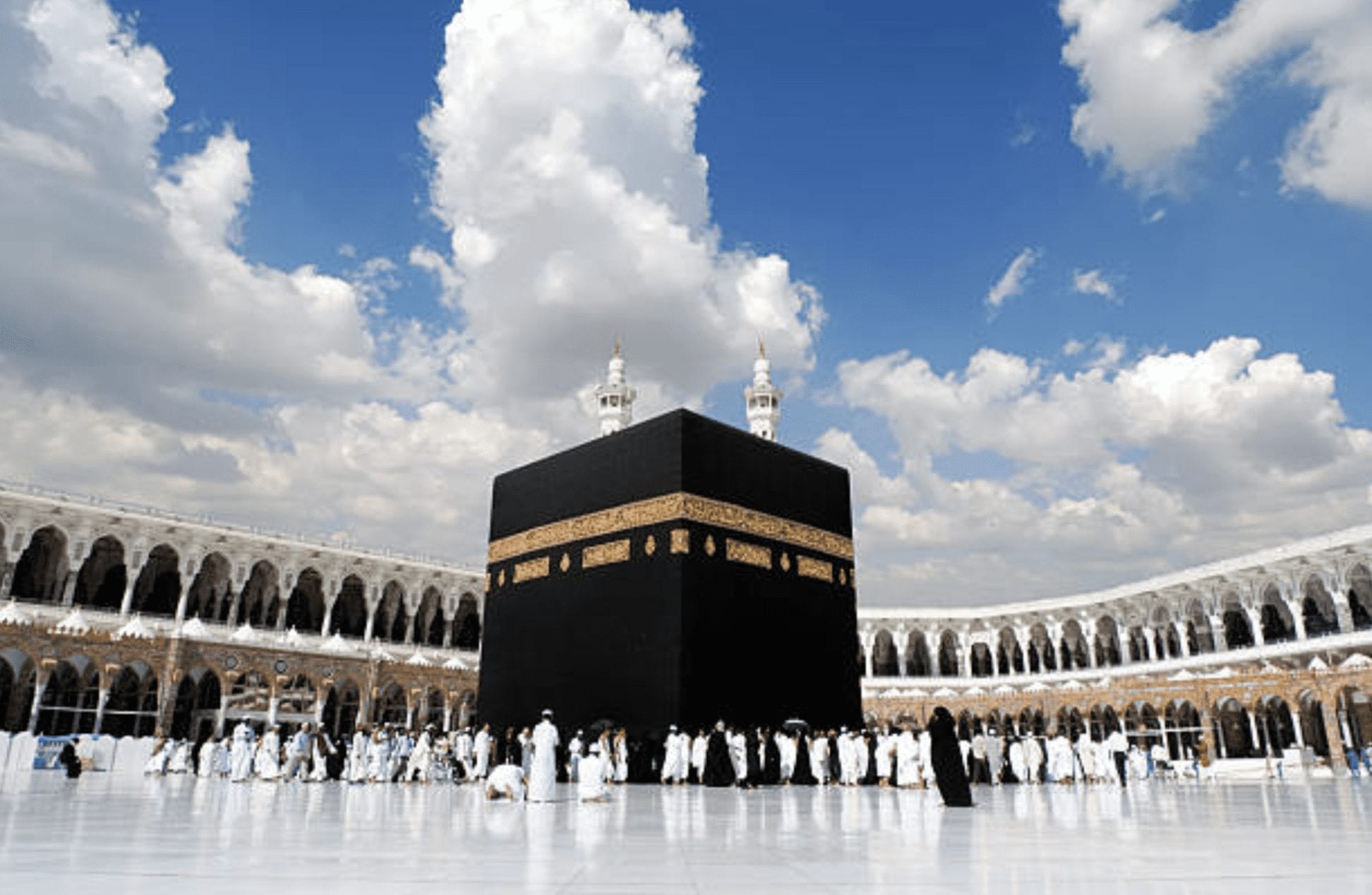Hajj is an obligatory practice that has received the title of being the most sacred journey towards the house of Allah SWT. With the different types of Hajj, it is regarded as a significant religious practice in Islam. Every year, millions of Muslims visit the house of Allah SWT due to its great significance.
Some people might ask: how does Hajj include all the types of worship? Well, it includes prayer, charity, Zakat, fasting, ideal character, patience, and jihad. This shows that Hajj is not only a pillar of Islam but also influences all types of social, national, economic, and moral areas of a Muslim’s life. ( Pillars of Hajj in Islam ) & ( Wajibat of Hajj )
The importance of Hajj in the Quran and hadith cannot be emphasized enough. Allah Almighty has made it obligatory for all Muslims who can afford it to perform the pilgrimage. In His Book, Allah says:
“In it are clear signs and the standing-place of Abraham. Whoever enters it should be safe. Pilgrimage to this House is an obligation by Allah upon whoever is able among the people. And whoever disbelieves, then surely Allah is not in need of ˹any of His˺ creation.” (Ali-Imran: 97)
Its significance can also be seen in the following hadith:
The Prophet Muhammad (PBUH) said, “Whoever performs Hajj to this Kaaba and does not approach his wife for sexual relations nor commit sins (while performing Hajj), he will come out as sinless as a newborn child, (just delivered by his mother).” [Sahih al-Bukhari]
As it is a pillar of Islam, it is important for every Muslim to learn about Hajj. So, if you have anything in mind like what types of Hajj are there, are there 5 types of Hajj or 3 types of Hajj, etc., you have landed on the right post. Here we will explain the different types of Hajj and their meaning to help you understand this religious practice better. Let’s have a look:
Table of Contents
Types of Hajj in Islam
So, how many types of Hajj are there in Islam? There are three types of Hajj.
- Hajj-ul Ifrad
- Hajj-ul Qiran
- Hajj-ul Tamattu’

Hajj-ul Ifrad
Hajj-ul Ifrad is the simplest type of Hajj. The pilgrim who performs this type of Hajj is called Mufrid. Usually, it is performed by those who live in Makkah and the Hills (residents of Miqat and the precincts of Haram), e.g., people living in Jeddah. It is known as the isolated Hajj since it is not accompanied by Umrah.
The pilgrim who performs this type of Hajj cannot combine it with Umrah. But if he performs Umrah during the months of Shawal, Dhul-Qa’dah, and Dhul-Hijjah, he is no longer a Mufrid and performing Hajj-ul Ifrad. If a pilgrim performs Umrah during these months, he will be required to perform any of the other two kinds of Hajj.
A pilgrim is needed to enter the state of Ihram to perform Hajj alone. A pilgrim declares his intention for Hajj via chanting O Allah! I answer Your call to perform Hajj. On reaching Makkah, they perform tawaf and Sa’i for their arrival. They don’t cut or shave their hair as they don’t disengage from the Ihram. Rather, they stay in Ihram after stoning. A Mufrid cannot exit the condition of Ihram until one throws stones at Jamarat. Also, a Mufrid can offer an animal sacrifice; however, he is under no obligation to do so.
It was narrated from Jabir that the Messenger of Allah (PBUH) performed Hajj Ifrad (Single Hajj). [Sunan Ibn Majah]
Hajj-ul Qiran
The literal meaning of Qiran is to combine two things. This type of Hajj is called accompanied Hajj as it is combined with Umrah. Hajj-ul Qiran is a concession from Allah SWT towards those who live away from the sacred Mosque, Masjid al-Haram. This allows a person to perform both Hajj and Umrah in a single visit.
While Qarin (the pilgrim who performs this kind of Hajj) may perform Umrah in the preceding Islamic months (Shawal and Dhul-Qa’dah), it is common to perform it during the first eight days of Dhul-Hijjah. The Qarin must perform Umrah and Hajj in the same ihram, irrespective of the length of duration between the two rituals.
The pilgrim is supposed to do Umrah first and then Hajj. A pilgrim wears Ihram for both Hajj and Umrah or wears the Ihram first for Umrah and makes intentions for Hajj before the Tawaf for Hajj. On reaching Masjid al-Haram, Makkah, the Qarin starts with tawaf and Sa’i – the two main practices in Umrah. After performing Umrah, the pilgrim can trim his hair but not shave until he performs Hajj.
The obligations on Qarin are the same as on Mufrid, except that it is obligatory for those performing Hajj-ul Qiran to sacrifice an animal, while those who perform Hajj-ul Ifrad are not obligated to do so.
Hajj-ul Tamattu‘
The last one of the three types of Hajj is Hajj-ul Tamattu’. Enjoying or taking advantage of a facility is the literal meaning of Tamattu’. Similar to Hajj-ul Qiran, this type also combines both Umrah and Hajj. But the difference between them is that after performing Umrah, the Mutamatti’ (pilgrim who performs Hajj-ul Tamattu’) is not obliged to perform the two rituals in the same Ihram.
The Mutamatti’ enters the state of ihram while intending to perform Umrah alone. After performing Umrah, they exit the state of Ihram and enter a new Ihram again when proceeding to Hajj on the eighth of Dhul-Hijjah. This relieves the pilgrim of the restrictions imposed by Ihram during the time between Umrah and Hajj.
Hajj-ul Tamattu’ can only be done by those who reside more than 48 miles from Makkah. Umrah has to be performed during the Hajj season, and it is considered invalid if it is performed before the beginning of Shawal or during the days of Hajj. Furthermore, the pilgrim who performs Umrah as part of this type of Hajj is not allowed to leave without performing Hajj.
Whatever happens, they must perform Hajj before going back to where they have come from. Just like with Hajj-ul Qiran, a Mutamatti’ has to offer an animal sacrifice when performing this Hajj. And if he fails to offer animal sacrifice, a Mutamatti’ must fast for ten days, except for the day of Eid-ul-Adha.
Experience Riwaq Al Quran Classes
Watch real moments from our live sessions at Riwaq Al Quran and see how we bring learning to life. These clips highlight our interactive, student-focused approach designed to keep learners engaged, motivated, and actively involved in every step of their educational journey.
What Are the Differences between Hajj and `Umrah?
Having finished the types of Hajj in detail, it is now time to learn the difference between Hajj and Umrah. Well, Hajj and Umrah are both Islamic pilgrimages. The main difference is that Hajj is an obligatory pilgrimage for those who can afford it, whereas Umrah is the Sunnah of Prophet Muhammad (PBUH).
A pilgrim can perform Umrah rituals in hours, while the completion of Hajj takes days. Also, Hajj can only be performed in the month of Dhul-Hijjah, whereas Umrah can be performed throughout the year except for Hajj days.
Check this out for beautiful Umrah and Hajj Mubarak wishes, and share them with your family and friends!
Why Students Love Learning with Riwaq Al Quran
Hear directly from our students about how Riwaq Al Quran Academy has transformed their connection with the Book of Allah. Their experiences reflect the dedication, care, and quality that guide every step of our teaching.
Learn Quran, Arabic And Islamic Studies Online With The Best Native Tutors
Riwaq Al Quran is a comprehensive online platform that offers personalized Quran, Arabic and Islamic Studies Online classes for individuals of all ages and backgrounds.
Their experienced instructors use a structured curriculum to cover Tajweed, Tafsir, and Memorization, providing easy and effective access to learning the Quran.
The advanced online classes allow for seamless communication and interaction between students and teachers. Join Riwaq Al Quran for a deeper connection with the Quran.
We offer several courses such as:
- Online courses for kids.
- Online Quran classes for kids and adults.
- Online Arabic courses
- Online Ijazah courses
- Online Islamic Studies courses.
Here are a sample of our set of Quran Courses that will be helpful for you:
- Online Tafseer Course: Delve into Quranic meanings with our insightful online Tafseer course.
- Noorani Qaida Online: Learn Quranic basics efficiently through our Noorani Qaida online program.
- Online Quran Recitation Course: Enhance Quranic recitation skills through our expert-led online course.
- Online Tajweed Classes: Master Tajweed rules for beautiful Quranic recitation in online classes.
- Quran Memorization Online Course: Memorize the Quran effectively with our specialized online memorization course.
- Online Qirat Course: Explore diverse Qirat styles with our comprehensive online Qirat course.
- Online Quran Classes for Kids: Nurture a love for the Quran in kids through interactive online classes.
Final Thoughts
Different schools of thought have different perspectives on all types of Hajj and their explanation and recommendations about them. Consulting an expert of your particular school of thought is a great idea to decide which one is the best type of Hajj for you.
At Riwaq Al Quran, we present an Online Islamic Course on the five pillars of Islam, which covers Hajj to a great extent. You can also contact our expert tutors to learn more about the types of Hajj and its rituals.


































